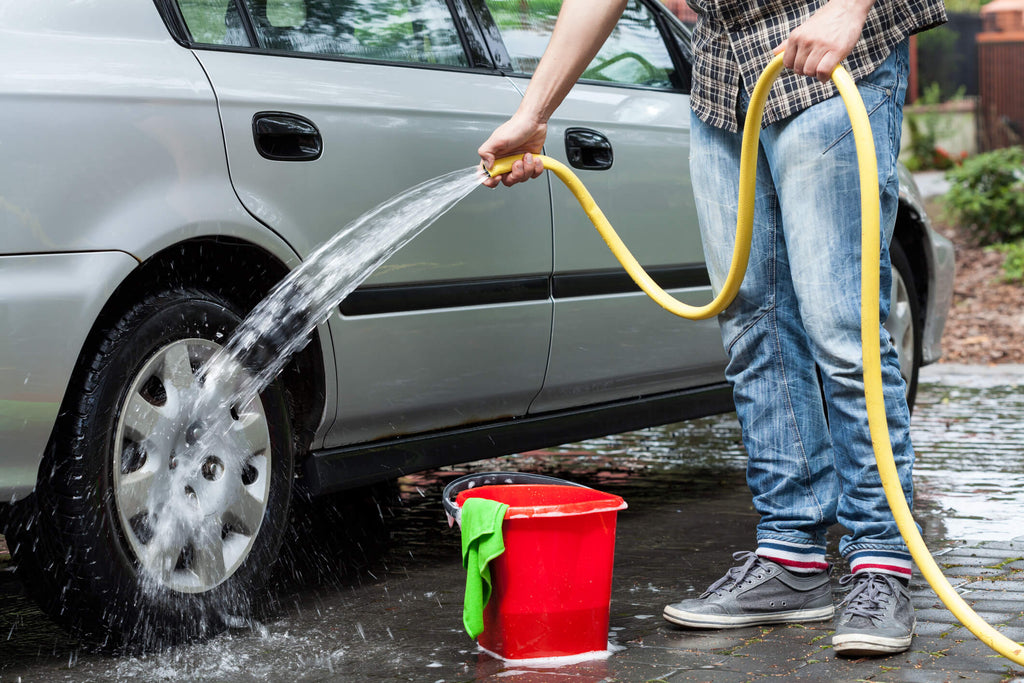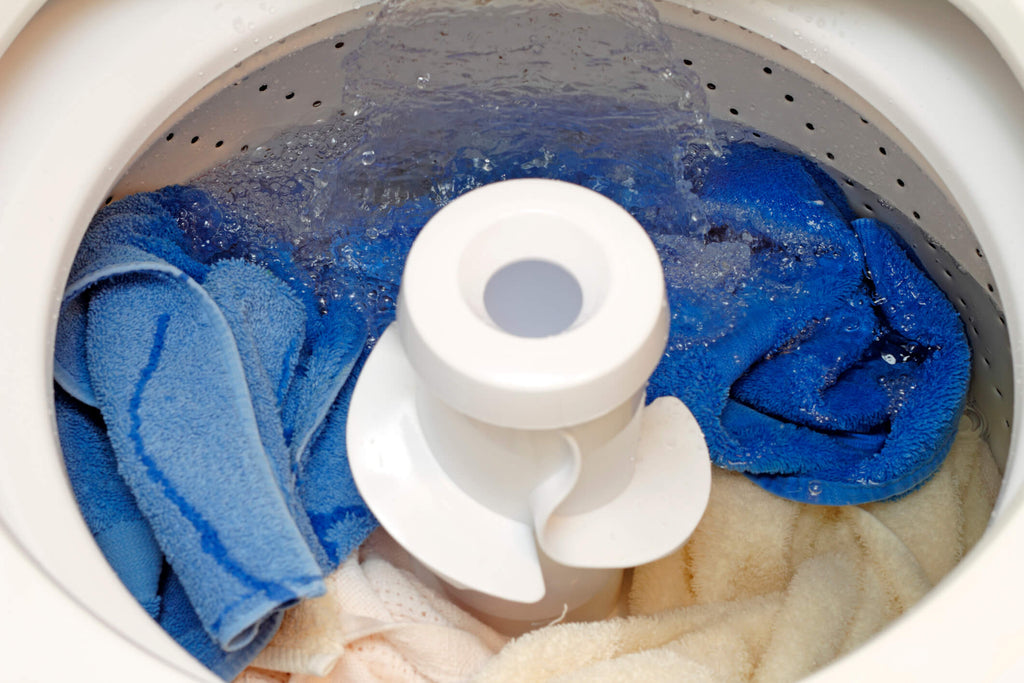
In times of high living costs, many homeowners have started saving money in any way they can. Because of its necessity and consistent use, water conservation has become an interest not just to environmentalists, but to the everyday citizen as well. One of the most effective ways to save money on your water bill and help the environment simultaneously is the process of rainwater harvesting. When collected efficiently, rainwater can provide thousands of gallons a year to a household. In fact, a 1000-square-foot roof can collect about 550 gallons of water from just one inch of rain. Once this rain is collected, it must be utilized safely and practically. Many indoor and outdoor uses for rainwater allow your home to save money and provide crystal clear drinking water when properly treated. Below you can find eight practical uses for rainwater in and around your home.
What can I use rainwater for?1. Gardening
Rainwater is superior to tap water for maintaining the health of plants. Rainwater is free from chemicals and minerals that shorten the lifespans of many types of vegetation. Tap water can also contain water-hardening minerals that are particularly harmful when absorbed into soil. Like humans, plants become dehydrated when the salt content in their water becomes too high. Consequently, naturally soft water hydrates plant life much better than water that is rich in calcium and magnesium. In addition to water hardness, the chlorine and fluoride content in tap water damages roots and kills beneficial bacteria and microorganisms. The lack of these beneficial microbes can drastically shorten the lifespan of a plant, particularly when tap water is the only type of water a plant consumes.
Learn more: What is hard water?
Rainwater, on the other hand, is soft, free from salts, and possesses an appropriate pH for plant life. When rain falls to the ground, it picks up particulates from the air. These contaminants lower the pH of the rain below 7, making the water slightly acidic. Tap water, in contrast, typically possesses a pH of 8 to 8.5. Most plants thrive when soil pH sits between 5.5 and 6.5, about the range of rainwater pH. In addition to proper pH, rainwater collected from a rooftop contains traces of organic matter. Leaves, bird droppings, insects, and other debris contaminate water as it runs across a roof. While large chunks are filtered out before reaching the storage tank, the rainwater keeps microbes that create a beneficial environment when introduced to soil.
Note that the microbes present in rainwater can be detrimental if they come into contact with the edible portions of plants. When these plants begin to grow, either the water used should be filtered, or an irrigation system should be utilized to prevent the possibility of bacterial contamination.
2. Washing cars
Rainwater provides distinct advantages over tap water for washing cars. Rainwater does not contain chlorine and chloramine, additives to tap water that kill bacteria. While chlorine is a necessary addition to tap water, it is not friendly to vehicle paint. An even bigger threat to car paint is water hardness. Water-hardening minerals are not dangerous to consume, so city water treatment plants are not required to eliminate water hardness from tap water. However, they do damage appliances, pipes, and paint. Calcium and magnesium, the most common water-hardening minerals, etch into the clear coat of a vehicle and can eventually cause enough damage to reach the base coat. The hardness of your tap water is contingent on where you live. Florida, Texas, Arizona, New Mexico, and the midwestern states contain the hardest water in the contiguous United States. Other regions with moderately hard water include California, Nevada, Utah, and the eastern portion of New York.
Learn more: How does city water treatment work?
Washing a car with rainwater may not always be beneficial. For example, if you live in an area with high levels of air pollution or smog, damaging acid rain is common. In this case, filtering your rainwater with a reverse osmosis system would provide the ideal rinsing liquid for your car. No matter what type of water you use for your car, dry the vehicle immediately after washing to prevent damage caused by water spots.

3. Watering the lawn
Like gardening, watering your lawn with rainwater can improve the overall health of your grass and other vegetation. Chlorine, chloramine, and fluoride are extremely detrimental to the health of plants. They prevent grass from fighting off diseases and from receiving the full benefits that rainwater provides. Harvested rainwater is identical to the water plants receive in the wild, with the added benefit of good bacteria collected from your rooftop. In drought-prone areas, stocking up on rainwater during the wetter seasons can set your lawn up for success during dry spells.
4. Flushing toilets
While rainwater is excellent to use outside, it can also be routed inside the home to be used for many water-saving applications. One of the most popular of these is toilet flushing. According to the EPA, about one-third of household potable water is used for flushing toilets. The water used to flush toilets does not need to be purified. Rather, it must be free from large chunks of debris that can clog pipes leading to and from the unit. A properly set up rain barrel or underground storage tank should filter out chunks that can create havoc on indoor plumbing. Because water used for toilet flushing does not need to be potable, toilet flushing is an efficient use for non-potable rainwater. A professor at Drexel University headed a study that claims a family of three in Philadelphia and New York could store enough water with the local rainfall to accommodate up to 80 percent of the family’s flushes in one year. Even in areas with lighter rainfall, stored rainwater can take a hefty chunk out of your water bill each month.
5. Washing clothes
The softness of rainwater makes it a prime candidate for use in a washing machine. In regions with hard water, minerals cause damaging and unattractive scaling in appliances over time. Rainwater does not contain these minerals, but it does contain some contaminants from the roof, gutters, and downspouts. To allow water to be safe for washing, a mechanical filter with a micron rating of less than 0.5mm must be utilized. Install a filtration system with a fine micron rating and engineered to eliminate mineral content, like some ceramic filers, reverse osmosis systems, or ultrafiltration systems. These offer versatile and cost-effective options to prepare water for a host of uses, including washing your clothing.

6. Drinking
Rainwater by itself should never be assumed safe to drink, but it can be made potable with a proper filtration system. Rainwater requires a two-step process to be considered safe to drink. This involves both disinfecting and filtering out dangerous contaminants picked up from the air and rooftop. To make rainwater drinkable, use one of the following two methods:
- Water distiller. A water distiller is an all-in-one solution for creating drinkable water from any water source. Not only does distillation separate water from bacteria, but it also removes essentially all other contaminants as well. While countertop distillers are slow to produce water, they provide more than enough water for drinking.
- UV lamp followed by a reverse osmosis filter. A UV lamp completes the disinfection step of purification by exposing water to ultraviolet waves. These prevent bacteria, viruses, and other microorganisms from reproducing. The reverse osmosis filter eliminates all contaminants from the disinfected water, leaving you with clean, safe water.
Learn more: How to collect rainwater for drinking | What is a reverse osmosis system?
7. Household cleaning
One of the biggest gripes of using tap water to clean windows, floors, and other surfaces is the streaks calcium leaves behind. Rainwater provides a clean finish that is perfect for use on glass, tile, marble, and other common household surface types. When cleaning areas where regular contact is made, such as a countertop, a filtration system should be used to ensure the water quality is sufficient for the surface being cleaned. Like for washing clothes, a mechanical filter with a micron rating of 0.5mm or less should be sufficient for most household cleaning needs. Some applications, such as washing windows, may not require a filter at all.
8. Bathing
While bathing is not a common use of rainwater, it is viable if the water is treated correctly. Like drinking water, bathing water must be disinfected to prevent disease from spreading to the bathing person. While some are comfortable bathing with untreated rainwater, bacteria can travel in water vapor. This creates a threat when the water vapor is inhaled, potentially contaminating the bathing person. A UV water purifier ensures that harmful bacteria cannot reproduce inside your body if ingested.
Learn more: What is a UV water purifier?
After disinfection, you have the option to incorporate a filtration system into your bathing water. How necessary this system is depends on the cleanliness of your rainwater harvesting system. If an abundance of dirt and debris collects in your water before it reaches the tank, a sediment filter can remove unwanted sediment from your bathing water. Otherwise, you may be showering with water that does not clean as well as desired.
If you have any additional questions, please do not hesitate to contact us.




